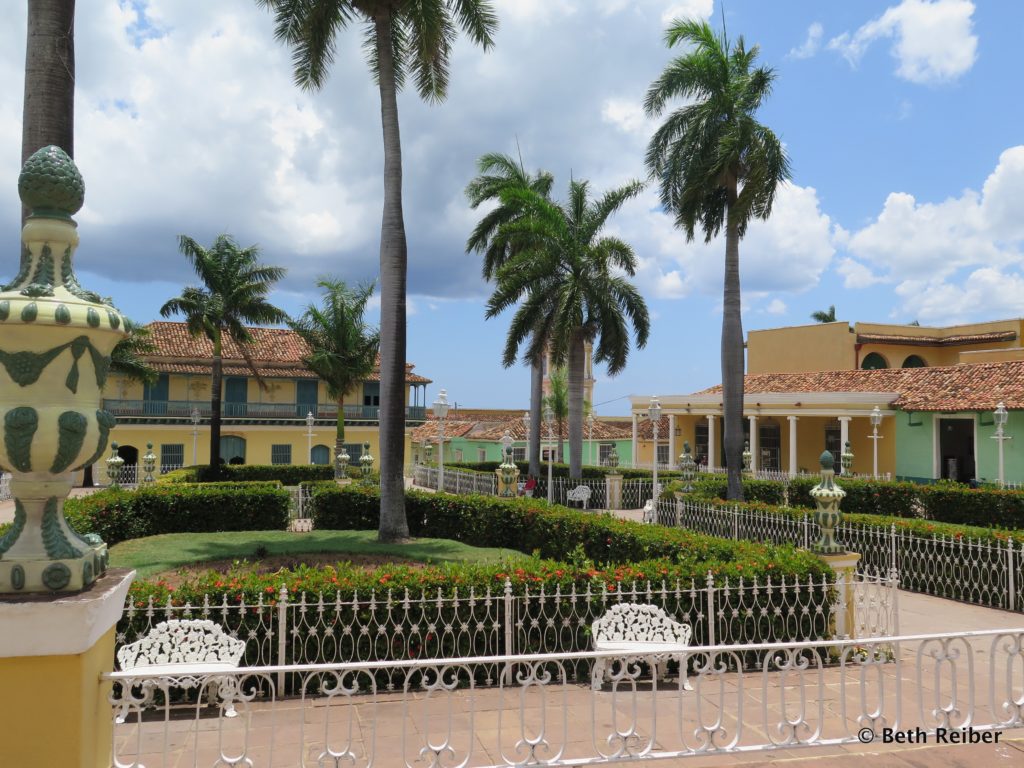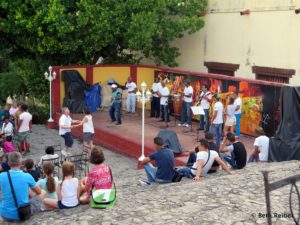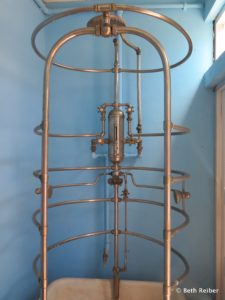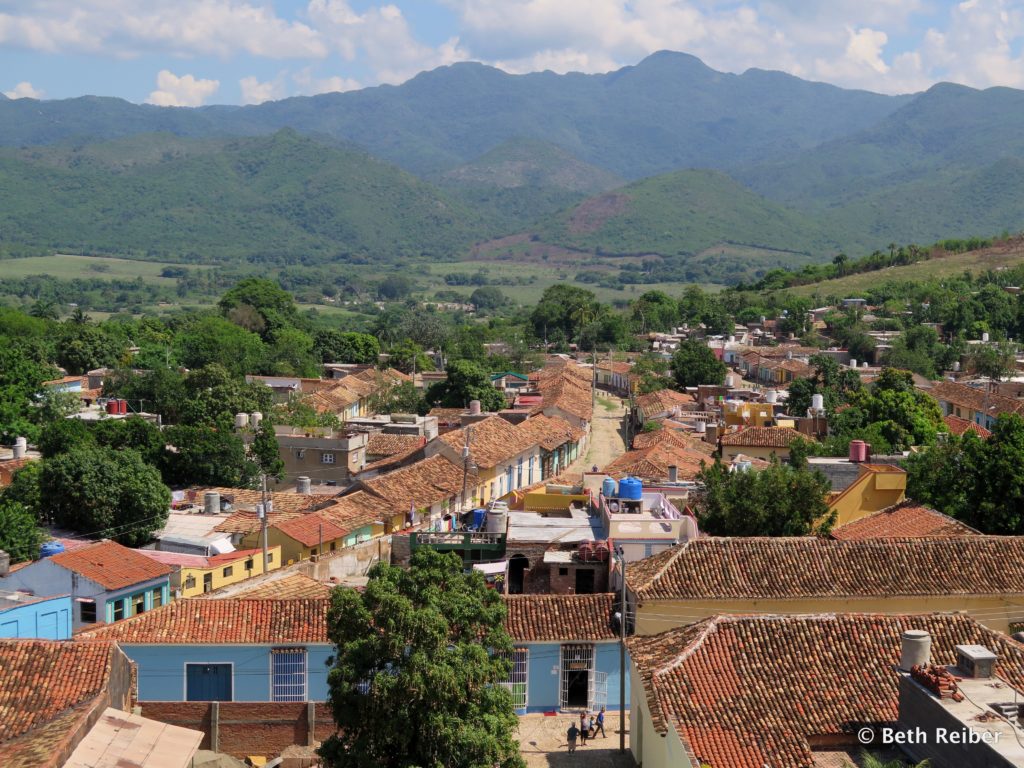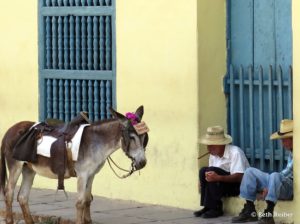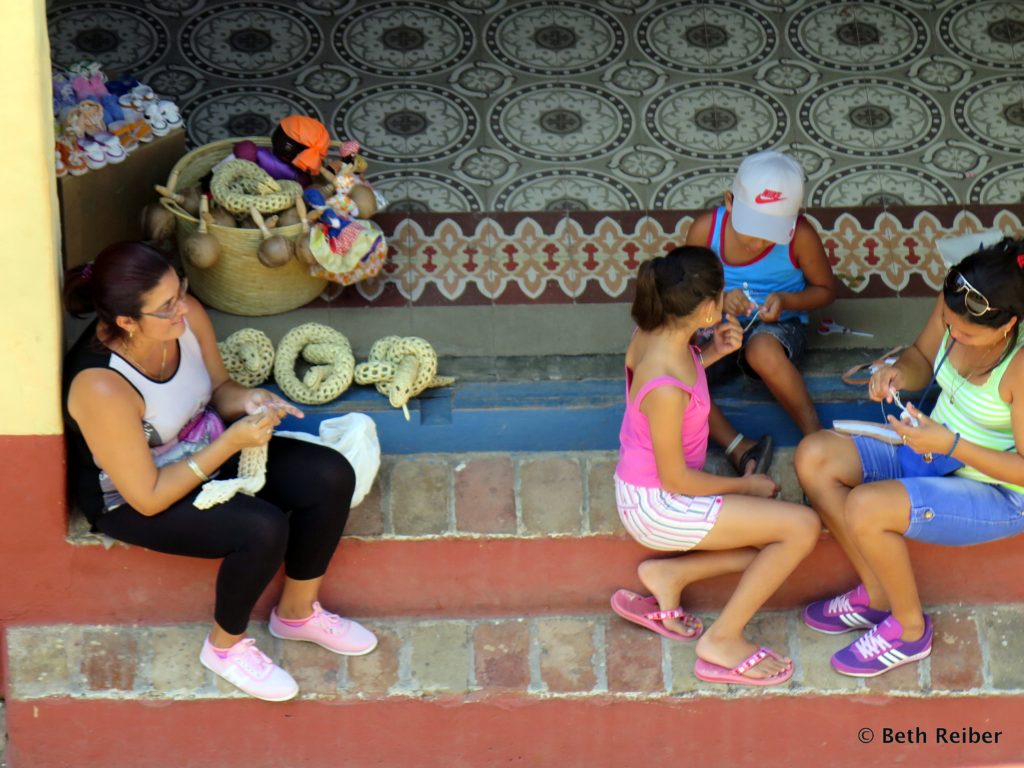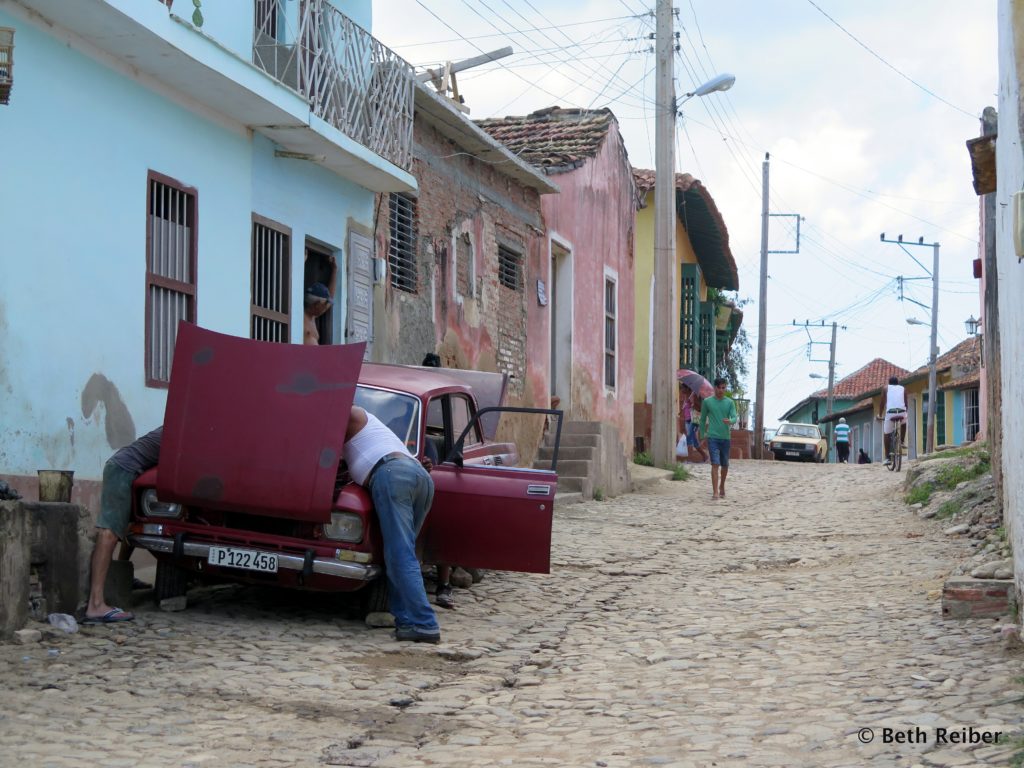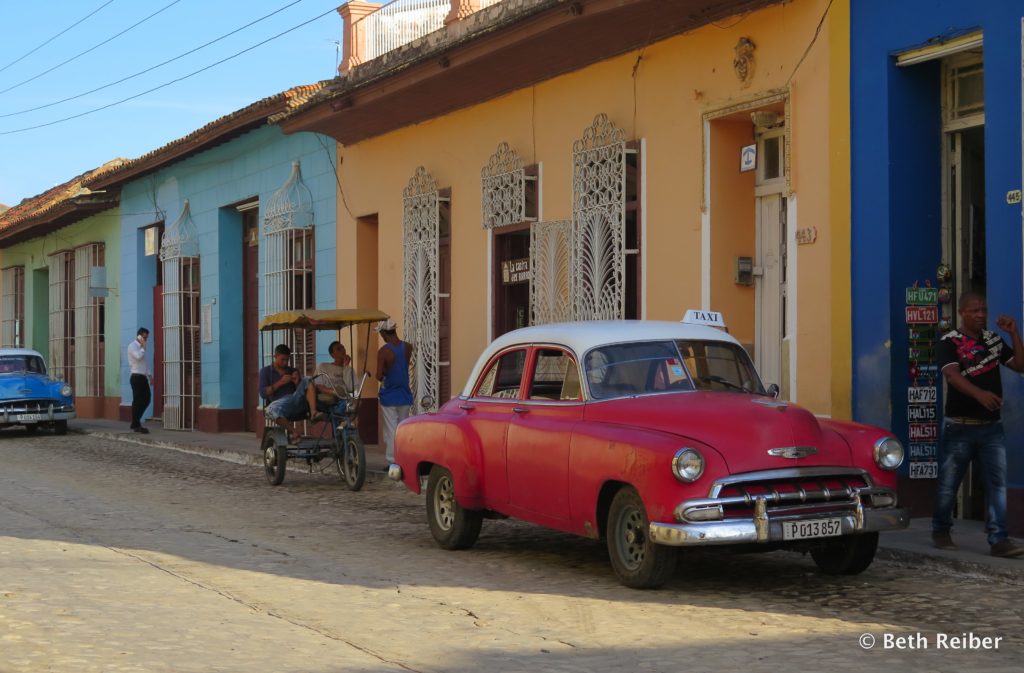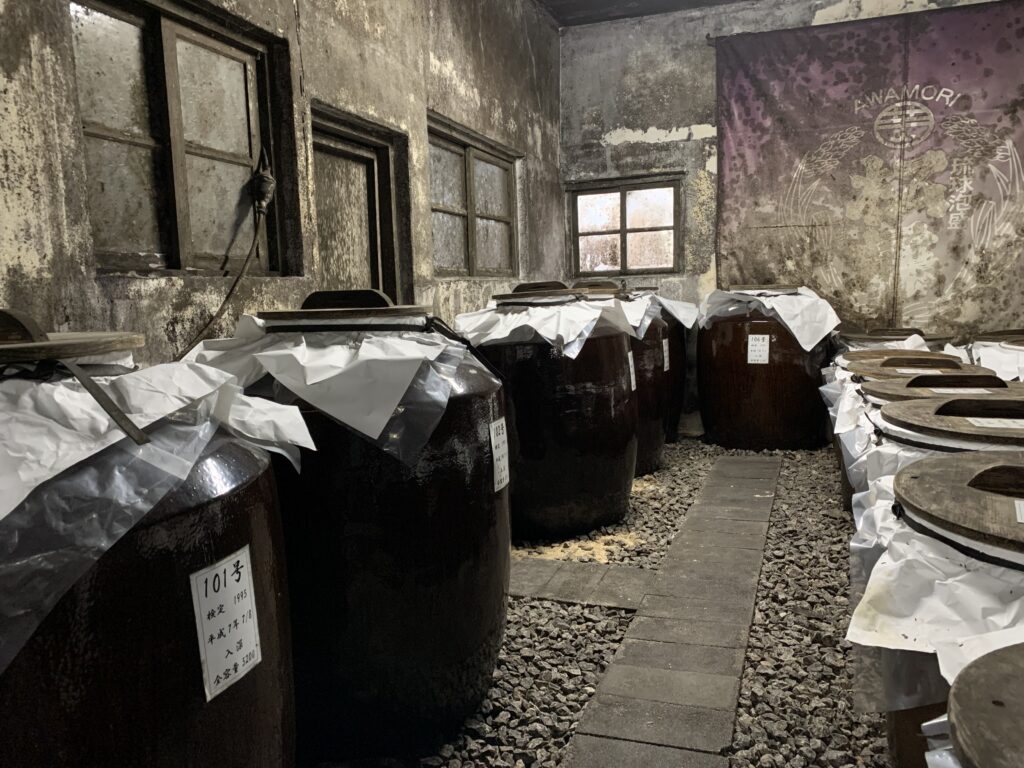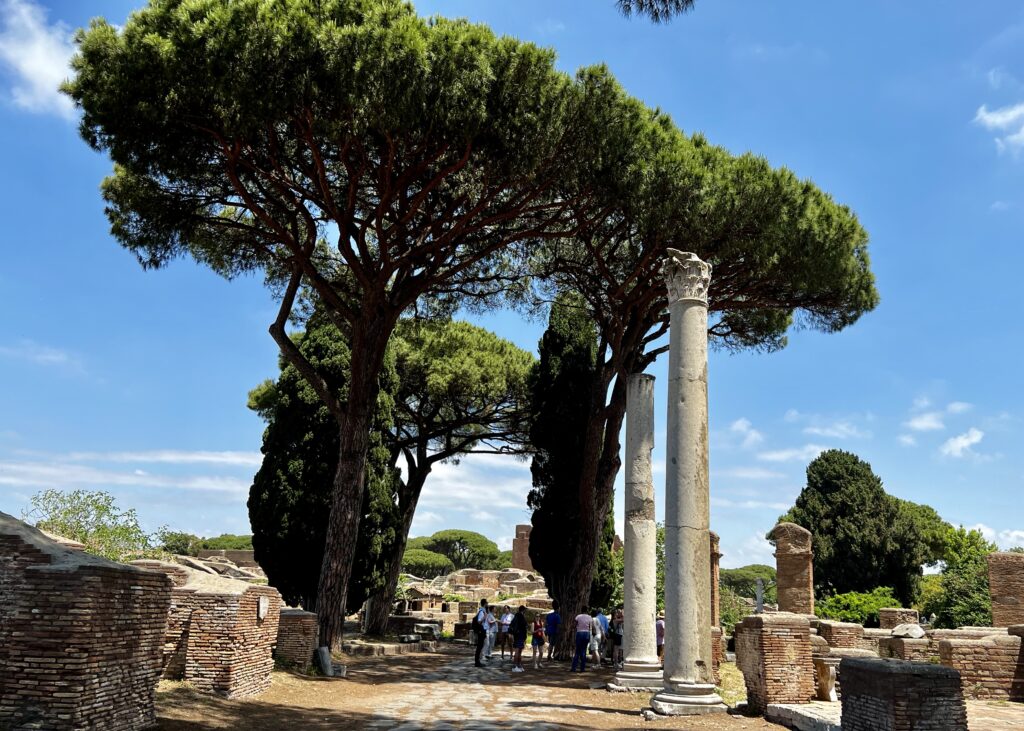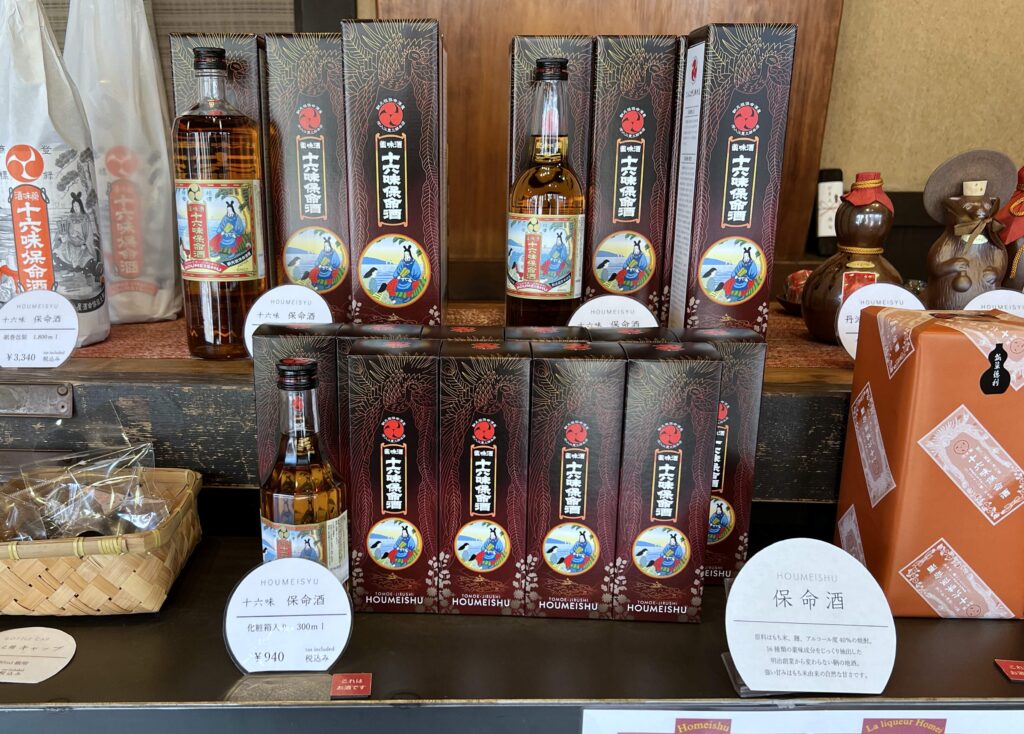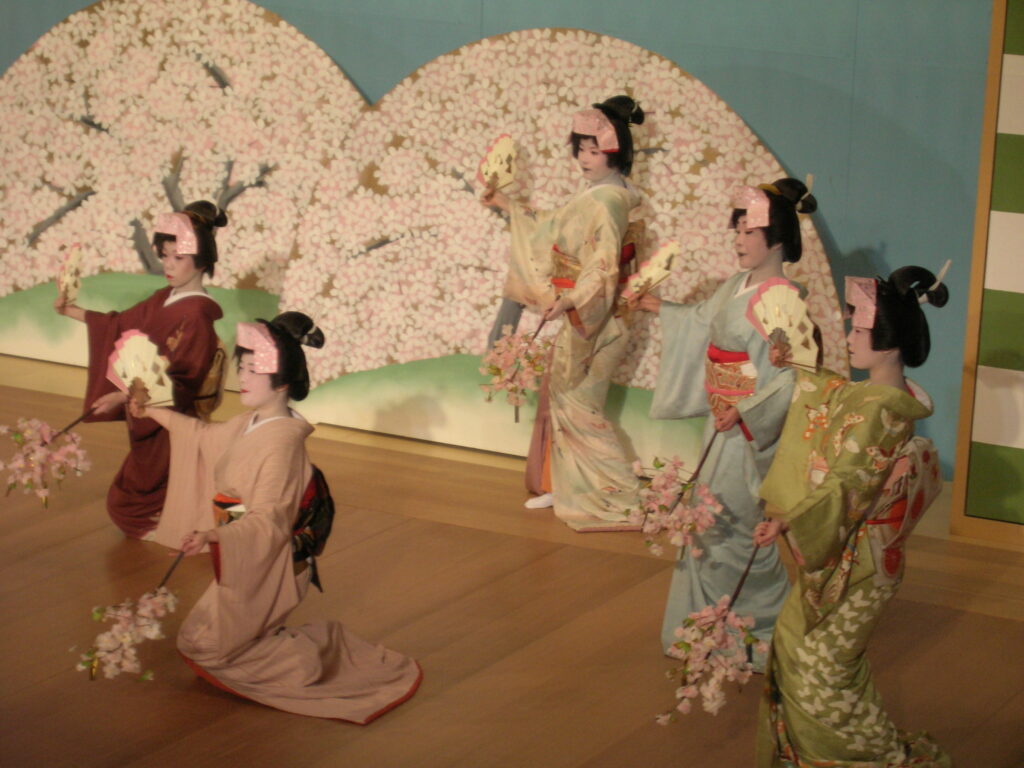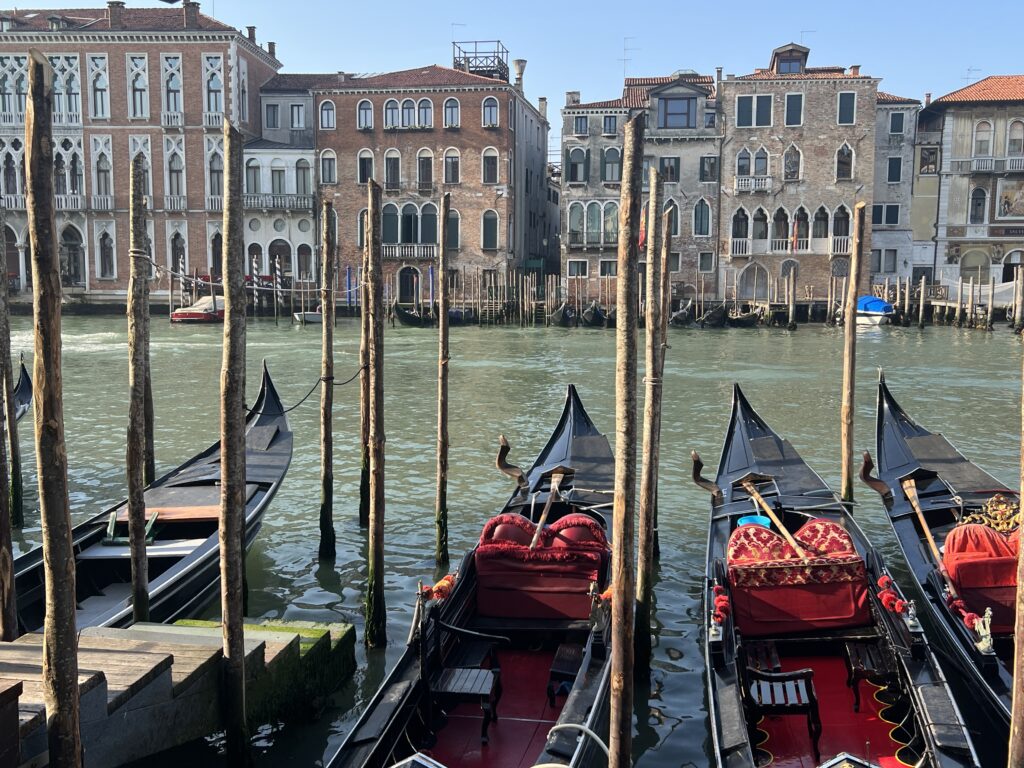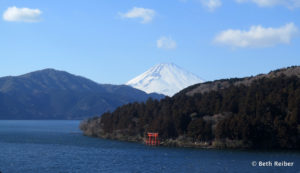There are probably more tourists in Trinidad, proportional to its size, than any other small town in Cuba. No wonder, considering that its perfectly preserved historic center has earned it a reputation as the prettiest colonial town in Cuba. Whereas Baracoa, my favorite Cuban town due to its laid-back, unpretentious and edge-of-the-earth ambiance, is a bit rough around the edges and markedly poor, Trinidad by comparison is refined and elegant, bonus of a sugar industry that flourished here from the late 18th century for more than 100 years.
Attractive plazas, grand churches, stately mansions, and winding cobblestone streets lined with modest vernacular buildings painted a rainbow of hues make Trinidad a photographer’s dream and a great place for exploration. The city’s 91-acre historic center, together with the nearby Valley de los Ingenios where more than 50 sugar mills once prospered, has been a UNESCO World Heritage Site since 1988.
Although busloads of tourists descend upon Trinidad daily, it’s hard not to like the town despite the crowds. In fact, my friend and I were so taken by the old town’s picture-perfect streets and the central location of our casa particular (the Cuban version of a B&B), that we promptly extended our room reservation from two nights to four.
Sightseeing in Trinidad
Four days gave us plenty of time to leisurely soak in the sun sitting on a bench in Trinidad’s main square of Plaza
Mayor, get lost in the winding streets radiating out from central Trinidad, enjoy long lunches, and browse among the many galleries and street stalls selling handmade lace (a local specialty), Che Guevara T-shirts, woodcarvings and other souvenirs. Like in most Cuban towns, musicians serenaded in virtually every tourist restaurant, hoping for tips. In the evenings, people gathered on a hillside terrace accessed by wide steps beside Plaza Mayor’s Church of the Holy Trinity, drinking beer or rum, listening to professional bands work their magic, and dancing when the mood inspired them.
We also visited Trinidad’s modest array of museums. On Plaza Mayor, the heart of historic Trinidad and once surrounded by residences of the city’s wealthiest landowners, is the Museo de Arquitectura, occupying the former home of a sugar-cane magnate. I was particularly interested in exhibits describing how local architecture was adapted to fit Cuba’s hot and humid climate and in rooms outfitted with furniture and decorative items that would have graced homes of Trinidad’s 19th-century wealthy, including chandeliers from the United States, French and German porcelain, and Italian marble, as well as such modern conveniences as indoor toilets and a shower.
The nearby Museo Municipal de Trinidad also occupies a colonial residence, built in the 1820s for the Cantera family, who were owners of sugar plantations and who filled their ornate home with Louis 15th-style furniture, French and American glassware, and other imported goods. Just steps away is the former Convent de San Francisco de Asis, of which only the iconic bell tower remains, affording the town’s best views of red-tiled roofs and the surrounding hillsides. It contains the Museo Nacional de la Lucha Contra Bandidos, one of many museums in Cuba extolling the virtues of the rebels fighting against the government, with photos of Fidel Castro and other revolutionaries, newspaper clippings, maps, and personal memorabilia like Che Guevara’s hammock, as well as exhibits related to counterrevolutionaries who tried to overthrow Castro and US efforts to aid them, such as a boat used by the CIA and part of the Lockheed U-2 plane shot down during the 1962 Missile Crisis. Unfortunately, descriptions are only in Spanish.
Learning about Trinidad at our Casa Particular
Luckily, my Spanish-fluent friend acted as my translator, which also was handy when communicating with Carmen and her husband Roberto, owners of our casa particular. Their beautiful old home, just steps from Plaza Mayor, was originally built in the late 1700s as a workshop for carpenters crafting the altars of Plaza Mayor’s Church of the Holy Trinity. Carmen’s great-grandparents, Spanish immigrants from Cartagena and Gerona, purchased the building in the 1800s and expanded it into a residence, which was subsequently handed down to Carmen’s grandparents, parents and now Carmen, who was born in the house. Like most homes in the historic district, Carmen’s house was designed for the flow and circulation of hot summer air, with front, barred windows open to the street, a front room with an enormously high ceiling, and a back outdoor terrace once used for cultivating vegetables but in Carmen’s case now filled with flowers (though most homes and businesses in Cuba do not have air-conditioning, our rented rooms always had window units).
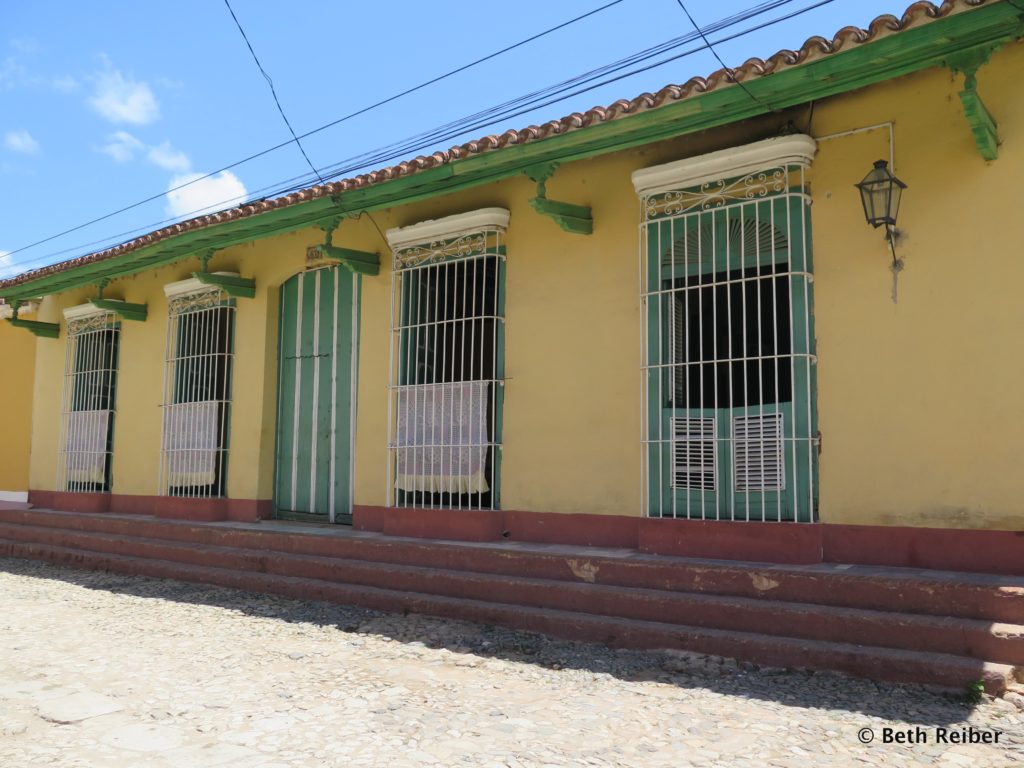
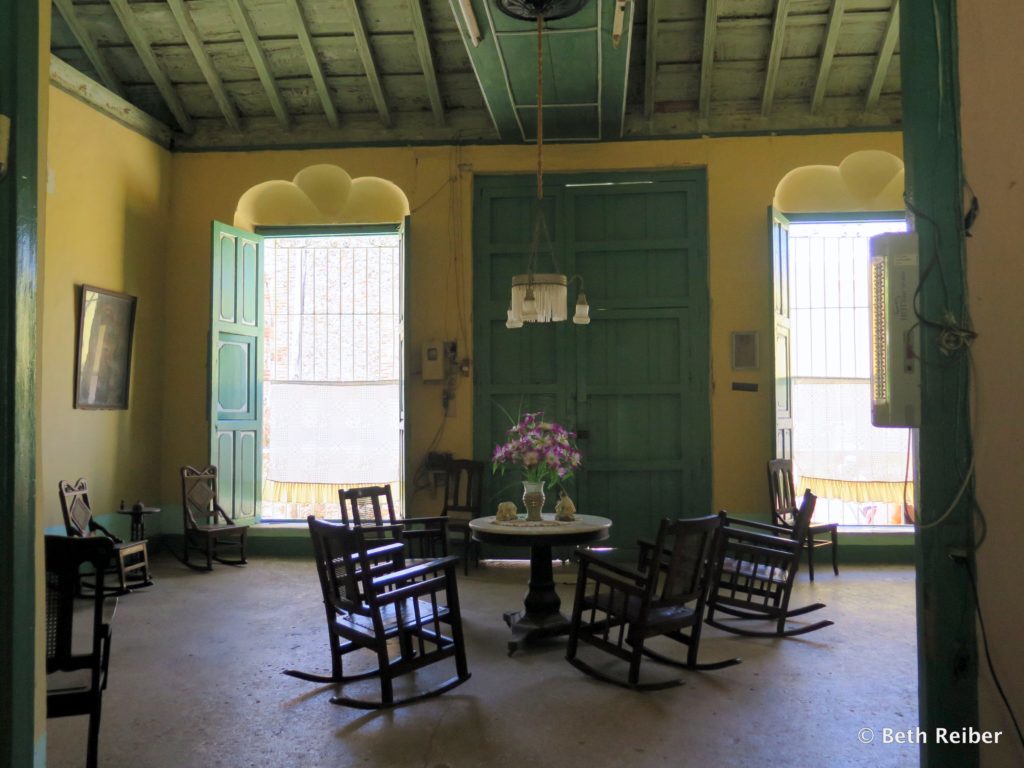
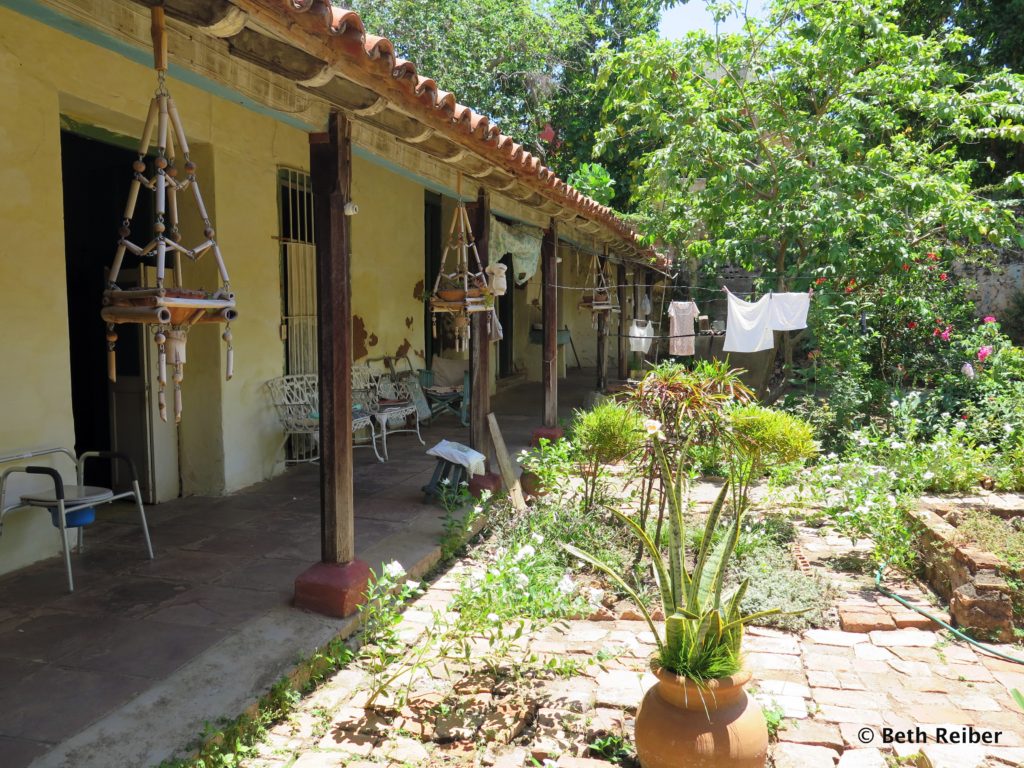
For me, Carmen seemed the very embodiment of Trinidad. Not only did her familial roots go back generations, but the location of her house so close to Plaza Mayor indicated her family must have been well-to-do, members of a privileged class pretty much flattened out by Castro’s communist regime. Now retired, she had played a part in the town’s cultural renaissance, working as a trained muralist in museums and also owning her own restaurant, while Roberto had served as chief of machinery at a sugar factory. They opened a room in their home to European tourists in 1994, after the collapse of the Soviet Union brought economic hardship to Cuba and an end to Russian and other Eastern bloc vacationers (now there are more than 300 private homes in Trinidad offering rental rooms as a casa particular). Like many of their neighbors and friends with family members who have left Cuba, they have a son and a daughter who live in Miami.
Carmen said that meeting people from other countries has opened her life to the world, but there are aspects of Cuba she doesn’t want to see disappear when I asked how things might change when the U.S. embargo is eventually lifted (although relations between Cuba and the U.S. seemed destined to change under the Obama presidency, Trump’s election has brought tighter restrictions).
“Cubans are committed to the ideals of the Revolution,” Carmen said in Spanish, which was then translated by my friend, “such as free education and medicine.”
In fact, virtually every Cuban I spoke with mentioned free education and medical care as the two things they valued most about their country.
And, Carmen said, crime is virtually nonexistent in Cuba. “You can walk anywhere any time,” she added.
But like most things in life, there’s always another side. Carmen and Roberto are obviously better off than many Cubans. They employ people who do the cleaning and small jobs around their house, while their son and daughter help out by sending goods hard to find in Cuba, including a scooter and our window air-conditioner. So while Castro did his best to eliminate class differences by paying doctors the same as garbage collectors, there is definitely a division between those who have the means to turn their homes into a casa particular, private restaurant or shop or to offer tourism services and those who don’t.
I spoke to a nun in Trinidad with Religiosas de Maria Inmaculada, who maintains a home where young girls from the countryside can live and get an education. Alcoholism, drug addiction and poverty are just some of the obstacles facing the young teenagers, she said, and it was obvious she had nothing but disdain for the Cuban government.
“Sometimes their families have no running water for a week,” she said, adding that because the girls lived in the country, they might have to get up at 4am to walk to school because there were no school buses. “It’s a dangerous time for girls at that age,” she said. “We’re filling a need not provided by government.”
Just outside Trinidad’s historic UNESCO core are multitudes of people who don’t have access to the tourist dollar and who live in small, dark and crumbling homes. It’s a part of Trinidad most tourists never see. One woman rushed out of her house when we walked by, asking whether we might want to go into business with her by turning her home into a casa particular or shop. We politely turned her down, but I couldn’t but think that I might have done the same in her shoes. And I also couldn’t help but wonder what might happen to people like her, when the inevitable comes and capitalism comes rushing in.
Need to Know: Although travelers from other parts of the world have been visiting Cuba in droves over the past couple of decades, Americans have not had that luxury. Although I and my friend–plus many other Americans I know–visited Cuba easily on our own by flying from Mexico, we rarely saw Americans who were not traveling as part of an organized group. Yet travel to Cuba is perfectly legal–it’s just that the Trump administration has issued regulations that make individual trips more taxing. Essentially, Americans cannot go to Cuba as tourists, but they can go on their own if their trip falls under one of 12 allowed categories, including a rather vague “support for the Cuban people.” Staying in a casa particular, eating at a restaurant in a private home, taking tours and classes offered by locals and other activities that put cash directly into local hands all qualify (you should document every transaction). Note that you are also not allowed any dealings with entities owned by the Cuban military, which includes hotels, shops and other businesses. For a better understanding of regulations for travel to Cuba, I recommend this article in the Miami Herald. To keep abreast of changing developments, I also recommend the website of the U.S. Embassy in Cuba.
